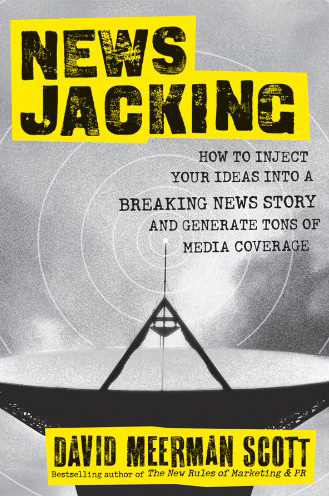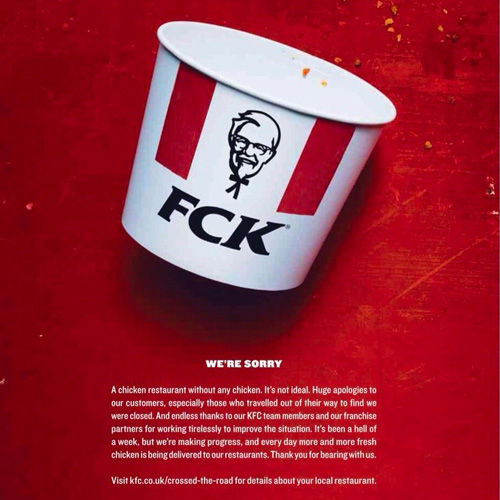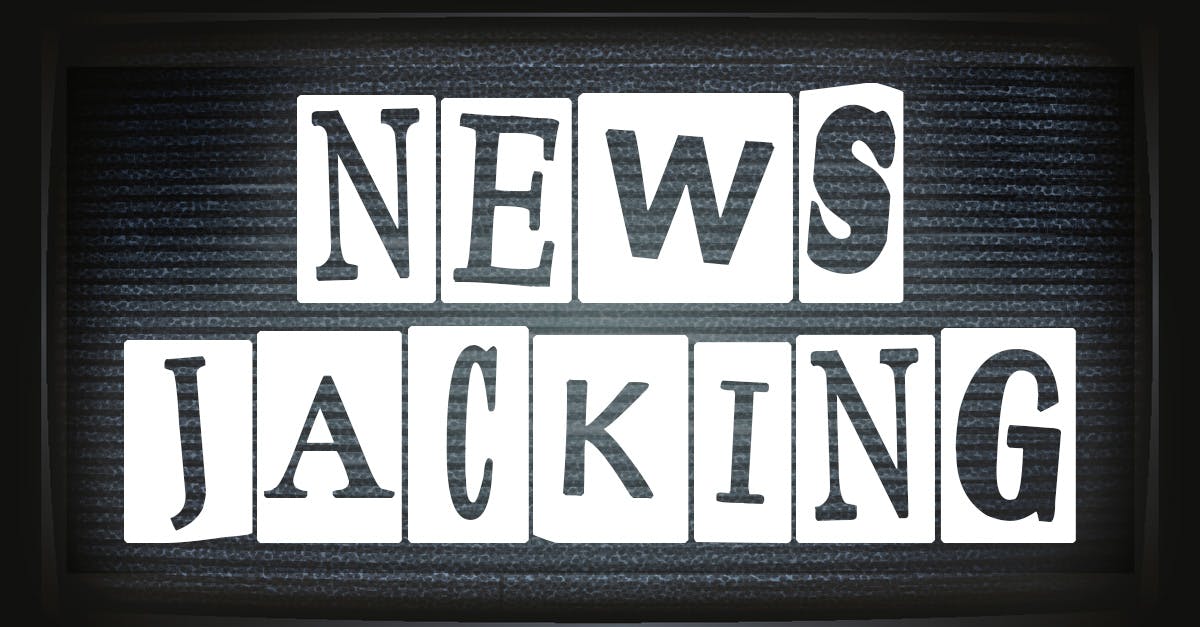In today’s fast-paced, information-driven world, breaking through the noise and capturing your audience’s attention is no easy feat.
The saying “timing is everything” has never been truer than in the world of marketing and public relations. This is where the art of newsjacking comes into play.
Read on and learn about how you can use newsjacking to market and promote your business.
What is Newsjacking?
Newsjacking is a marketing and public relations strategy that involves capitalising on current events or breaking news to promote your own brand, product, or message.
The term was popularised by marketing expert David Meerman Scott in his book “Newsjacking: How to Inject your Ideas into a Breaking News Story and Generate Tons of Media Coverage”.
The idea behind newsjacking is to insert your business or message into a trending news story in a way that’s relevant and timely.
By doing so, you leverage the media’s attention on a particular topic to gain exposure and generate interest in your content or offerings.

What are the benefits of newsjacking?
- Increased Visibility: Newsjacking allows you to leverage the attention surrounding a trending news story or event. This can lead to increased visibility for your brand or message, as more people engage with your content.
- Relevance: By connecting your content to a current news event or trend, you demonstrate the relevance and timeliness of your message. This can help your brand stay current and appear more in touch with current events.
- Engagement: Newsjacked content often sparks conversations and discussions on social media and other platforms. Engaging in these conversations can help you connect with your audience and attract new followers, customers or clients.
- Media Coverage: If your newsjacking efforts are successful and your content provides unique insights or solutions related to a news story, you may attract the attention of journalists and reporters. This can lead to media coverage and interviews, further increasing your brand’s exposure.
- SEO Benefits: Creating content that’s timely and relevant to current events can improve your search engine rankings. When your content is connected to trending news topics, it’s more likely to appear in search results for related keywords.
- Cost-Effective Marketing: Newsjacking doesn’t typically require a significant advertising budget. It’s about creating relevant and timely content that can be shared through social media, your website and other online channels. This makes it a cost-effective way to generate attention.
- Thought Leadership: Successfully newsjacking a relevant story can position you as a thought leader in your industry. It shows that you can provide valuable insights and solutions in real time, reinforcing your authority and expertise.
- Provides a Competitive Edge: By newsjacking and responding quickly to current events, you will help stay ahead of your competitors and reach your audience with a message that’s relevant at the moment.
- Consumer Engagement: When done well, newsjacking can enhance your relationship with your audience by showing that you’re attuned to their interests and concerns. It can also humanise your brand and make it more relatable.
- Brand Loyalty: Effective newsjacking can lead to increased brand loyalty, as customers and followers appreciate your ability to provide relevant information and solutions when they need them.
Newsjacking allows you to supercharge the visibility for your brand or message by leveraging the attention surrounding a trending news story or event.
How to get started with newsjacking:
- Identify Relevant News: Monitor the news and social media for trending topics or breaking news stories that relate to your industry, expertise, or products.
- Act quickly: Newsjacking requires a timely response. As soon as you identify a relevant news story, act quickly to create content, such as blog posts, social media updates or press releases.
- Offer a unique perspective: Provide a fresh and valuable perspective or angle related to the news story. This could be commentary, insights, analysis or solutions that connect your business or message to the current event.
- Distribute and promote your content: Share your content through various channels, including social media, your website and relevant news outlets. Use appropriate hashtags and keywords to increase visibility.
- Engage with your audience: Be prepared to engage with your audience and respond to comments and questions on your newsjacked content.
Timing is everything
You need to act quickly to stay relevant. Being the first to respond or offer a unique perspective on a breaking news story can significantly enhance the success of your newsjacking campaign.
What topics work well for newsjacking?
The effectiveness of newsjacking largely depends on the relevance of the chosen topic to your brand, industry and audience. However, some topics tend to work better for newsjacking because they are more likely to generate engagement and interest. Here are some categories of news topics that can work well for newsjacking:
- Industry Trends: News related to your specific industry, such as new technologies, emerging trends or regulatory changes, can be excellent choices for newsjacking. By providing insights or solutions related to these trends, you position your brand as an industry leader.
- Major Events: Events with broad appeal, like major sports events, cultural celebrations or holidays, can be good opportunities for newsjacking. Find a creative angle that ties your brand or message to the event.
- Seasonal Relevance: Newsjacking can be particularly effective during certain seasons, such as back-to-school season, holidays or special observance months. Align your content with the seasonal context.
- Cultural and Pop Culture References: News related to movies, music, celebrities or popular culture can be highly shareable. Ensure that your content connects your brand or message to the cultural reference in a meaningful way.
- Health and Lifestyle: Health-related news, lifestyle trends or wellness topics often generate interest. If your brand is related to health and wellness, these can be ideal topics to newsjack.
- Environmental and Social Issues: News stories related to environmental sustainability, social causes or corporate social responsibility can be great for newsjacking – especially if your brand is involved in these areas.
- Innovations and Breakthroughs: News about scientific breakthroughs, technological innovations or advancements in your field can offer opportunities to showcase your expertise.
- Local or Regional News: Local businesses can benefit from newsjacking local or regional stories – this can help you connect with your community and show your support for local events and causes.
- Economic Developments: Economic news, such as changes in the stock market, job reports or business trends, can be relevant for companies in finance, investment or related industries.
- Awards and Recognitions: News of awards, recognitions or rankings can be an excellent opportunity to share your accomplishments and celebrate them with your audience.
- Product Launches or Announcements: If your company is launching a new product or service, newsjacking your own announcement can create buzz and excitement.
- Trending Hashtags: Monitor trending hashtags on social media platforms like Twitter and Instagram. When a relevant hashtag aligns with your brand’s message, it can be a great opportunity to participate in the conversation.
Remember that the key to successful newsjacking is to provide a unique and valuable perspective or solution related to the chosen topic. Your content should enhance the conversation and offer something that your audience finds informative or engaging. Additionally, ensure that your newsjacking efforts align with your brand’s values and remain authentic and relevant to your target audience.
Stamford Digital Top Tip
HARO (Help A Reporter Out) and JournoLink
allow journalists to submit requests for information, expert quotes, or sources for their articles, stories
or research. It’s a handy way of staying in touch with current news, events and trends.
Are there any drawbacks to newsjacking?
While newsjacking can be a powerful marketing and PR strategy, it also comes with potential drawbacks and risks that need to be considered:
- Relevance and Authenticity: If your newsjacking content is not genuinely relevant to the news story or if it feels forced, inauthentic or opportunistic – it can damage your brand’s reputation. Audiences can quickly recognise insincerity, and this can lead to negative sentiment.
- Misinterpretation: Newsjacking content can sometimes be misinterpreted, leading to backlash or criticism. It’s essential to be clear in your messaging and avoid any ambiguity that could be misconstrued.
- Timing Issues: Newsjacking requires quick action. If you miss the ideal timing or post too late, your content may lose its impact or relevance.
- Overuse or Insensitivity: Overusing newsjacking or attempting to connect your brand to every trending news story can come across as tone-deaf or insensitive, especially when dealing with tragic or sensitive events. It may make your brand seem opportunistic rather than empathetic.
- Negative Association: Associating your brand with certain news stories or topics can have unintended consequences. If the news story takes a negative turn, your brand might be unfairly associated with it, potentially damaging your reputation.

Newsjacking content can sometimes be misinterpreted, leading to backlash or criticism. It’s essential to be clear in your messaging and avoid any ambiguity that could be misconstrued.
- Media Backlash: If your newsjacking content attracts media attention, it could lead to negative coverage or scrutiny. Journalists may question your motives, which can harm your brand’s image.
- Audience Backlash: Your audience may have diverse opinions about a news story, and if your content takes a strong stance – it could lead to audience backlash, causing you to lose followers or customers.
- Loss of Control: Newsjacking puts your brand’s message into a fast-moving, unpredictable environment. You may lose some control over how your message is received and shared.
- Legal and Ethical Issues: Certain newsjacking attempts can lead to legal or ethical issues, especially if you inadvertently infringe on copyrights, trademarks or intellectual property rights, or if your content is considered offensive or controversial.
- Short-Term Focus: Newsjacking is often short-lived and focused on immediate events. While it can provide a temporary boost in visibility, it may not contribute to long-term brand building.
- Resource Intensive: Effective newsjacking requires time, effort and resources to create and distribute content quickly. It may not be feasible for all businesses, especially those with limited resources.
Five famous newsjacking campaigns 🤩
Newsjacking is a common marketing tool for brands. Here are some examples of famous newsjacking campaigns from the past:
1. LEGO’s “Royal Baby” Post
When Prince George was born, LEGO posted an image of a LEGO version of the royal family with a baby carriage. This post showcased the brand’s creativity and ability to connect with current events in a playful way.
2. Paddy Power’s “Luis Suarez Chewing”
After the controversial incident in which Luis Suarez bit an opponent during the FIFA World Cup, Paddy Power, a bookmaker known for its cheeky marketing, swiftly responded with a tongue-in-cheek tweet and an advertisement featuring Suarez with a toothbrush.
3. KFC’s “FCK” Apology Ad
After a chicken shortage forced KFC to close many of its restaurants in the UK temporarily, the company newsjacked the situation by running a full-page newspaper ad that rearranged the letters in “KFC” to “FCK.” The ad served as a humorous and effective apology to their customers, acknowledging the situation in a memorable way.

4. Oreo’s “Dunk in the Dark”
During the Super Bowl XLVII, a power outage occurred in the stadium. Oreo quickly capitalised on the situation by tweeting an image of an Oreo cookie with the caption, “You can still dunk in the dark”. The tweet went viral and garnered significant media attention, showcasing how quick-thinking and timely content can lead to success.

5. Specsavers’ “Should’ve Gone to Specsavers”
Specsavers, a well-known UK optician and eyewear retailer, is famous for its “Should’ve Gone to Specsavers” catchphrase. They cleverly used newsjacking in 2012 during the London Olympics. When a South Korean flag mix-up occurred during the women’s football match between North Korea and Colombia, Specsavers capitalised on the situation with a tweet: “Should’ve gone to Specsavers” – a humorous reference to the fact-checking error.
To avoid these drawbacks, it’s crucial to approach newsjacking with careful planning, authenticity, and sensitivity.
Ensure that your brand’s values align with the news story you’re engaging with, and be prepared to respond to any positive or negative feedback promptly. In addition, you should consider the long-term implications and how newsjacking fits into your overall marketing and PR strategy.
Now, let’s go over to our special correspondent…
We’ve covered a lot in this article :
✅ You’ve learned what newsjacking is
✅ We’ve covered the benefits of newsjacking
✅ How to get started with newsjacking
✅ Also, we’ve covered the drawbacks of what can happen if newsjacking goes wrong 🙈
✅ We’ve looked at some famous past newsjacking campaigns
⚡️ Action point: I would like you to try giving newsjacking a go for your brand or business. It would be great to hear how you get on and if this article guided you along the way.
Oh, there’s just one more thing…
Now, I’m going to assume that you’re a pretty busy person and you haven’t got time to be constantly following breaking news and events.
With this in mind, just before we sign off, here are three quick tips from Stamford Digital that will help you stay on top of the news:
Tip 1: Turn on notifications from news outlets
Sounds simple, but one way to stay on top of current news and events is to turn on alerts and receive notifications.
As we all know, notifications can be distracting, so I recommend you be selective especially if your small team. Dip your toe in the water and only turn on notifications from news outlets related to your industry or business sector.
Tip 2: Feedly
Feedly is a popular web-based news aggregator and RSS (Really Simple Syndication) reader.
It’s a really handy tool that allows you to gather, organise, and read content from various websites, blogs, and news sources in one central location.
You can use it for free and we strongly recommend you use it. It is one of the tools that we use to help us stay on top of news and events. It saves us a lot of time having to manually check news outlets and resources on the web.
Tip 3: Subscribe to HARO and JournoRequest
HARO (Help a Reporter Out) and JournoRequest are two online platforms that connect journalists and reporters with sources and experts for their news stories or articles.
You can sign up for both of these services for free. We find this is an incredibly useful way to stay on top of current news and events. There might even be the odd subject that you or your business can contribute to. However, that’s a subject for a completely different article.
We hope you enjoyed this article and found it insightful. Contact us if you have any questions about newsjacking, PR or digital marketing.



